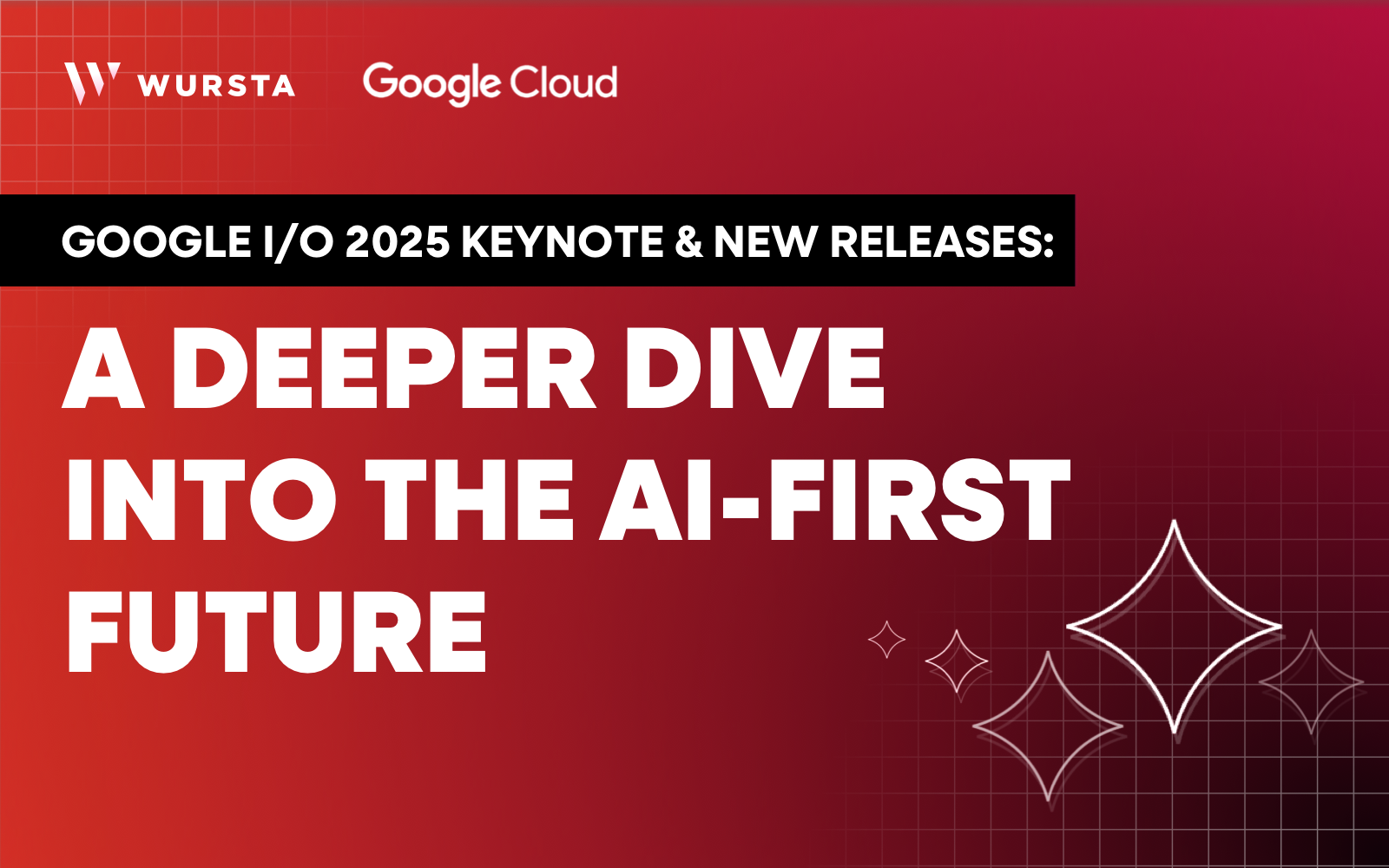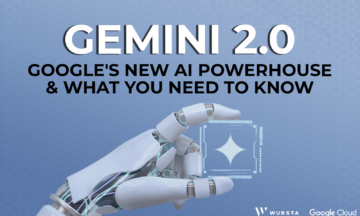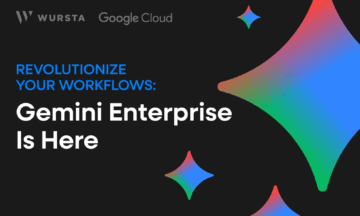Google I/O 2025 Keynote & New Releases

A Deeper Dive into the AI-First Future
Google I/O 2025 has concluded, and as anticipated, it was an AI-centric spectacle. The event showcased Google’s strategic initiative to embed intelligence across its entire ecosystem. While the keynote centered heavily on Gemini, and subsequent sessions delved into a myriad of emergent technologies, our teams at Wursta have analyzed these advancements to identify the solutions and value they can bring to our partners. Here are some key insights:
1. The Pervasive Power of Gemini:
- Workspace Transformation with Google Flows: Workspace is undergoing a significant evolution. Google Flows will empower your business by enabling end-users to automate processes directly, reducing reliance on third-party products or custom code development. Wursta is ready to assist your teams in understanding the technical capabilities, navigating the necessary change management, and implementing developer best practices for secure and reliable deployments.
- A New Era for Development: We’re witnessing paradigm shifts across the development landscape, leading to the commoditization of custom development and even the tools themselves. Stepping back to view this evolution holistically, we recognize that these powerful tools can now be effectively employed by individuals in roles previously considered far removed from traditional development. Wursta can work with your users to help them understand and leverage these new tools within the context of their specific roles and expertise. This approach empowers a wider range of users to adapt to technological advancements and differentiate their contributions. For your business, this translates to significantly reduced reliance on complex and expensive technology stacks built over the years from disparate tool requests.
- Gemini 2.5: Smarter, Faster, and More Capable: Google unveiled significant advancements with Gemini 2.5, including an experimental “Deep Think” mode in Gemini 2.5 Pro, designed for complex reasoning in mathematics and coding. This signals Google’s unwavering commitment to pushing the boundaries of AI’s analytical and problem-solving prowess. The value proposition of leveraging Gemini integrations within Workspace and Cloud is well-established. Augmentation is now possible for most roles, provided your users understand the limitations and the context required for effective use. Wursta offers a variety of programs that holistically consider both your business goals and your teams, providing training and enablement that deliver tangible business value.
- Gemini Live Takes Center Stage (and Camera): Previously a Pixel-exclusive feature, Gemini Live is now rolling out to all compatible Android and iOS devices. Its standout capability is the ability to interact with your phone’s live camera feed and screenshots, offering real-time assistance and information based on what it “sees.” This represents a significant leap towards a truly contextual and proactive AI assistant.
- Gemini in Every Corner: From integration into Chrome (answering questions about open tabs) to Android Studio (accelerating app development with UI transformations and code generation), Gemini is becoming the universal intelligence layer for Google products.
2. Generative AI for Creators:
- Veo 3: Video with Sound: Google’s video generation model, Veo, received a major upgrade with Veo 3. It can now generate videos with native audio, including sound effects, background noise, and even dialogue. This is a significant step towards more realistic and immersive AI-generated video content, with potential applications in marketing, training, and internal communications.
- Flow: AI Filmmaking Tool: Building on Veo, Google introduced Flow, an AI-powered filmmaking tool. It empowers creators to generate scenes, characters, and other movie assets using natural language prompts, complete with camera movement and perspective controls. This tool aims to democratize filmmaking and storytelling.
- Imagen 4: Enhanced Image Generation: Imagen 4 delivers higher resolution (up to 2K) and improved fidelity, particularly in generating text and typography within images – a traditional challenge for AI models.
- SynthID Detector: Promoting Responsible AI: In a move towards transparency and responsible AI, Google announced SynthID Detector. This tool helps identify AI-generated content by detecting hidden watermarks, addressing concerns about deepfakes and misinformation.
3. Stepping into Extended Reality with Android XR:
- Android XR’s Debut: While details on Google’s own headset are still emerging, Android XR was officially showcased, with partners like Xreal developing devices such as Project Aura. The keynote also highlighted the potential of Android XR glasses for real-time language translation in live demonstrations. This marks a significant push into the spatial computing landscape. The power of this technology is a testament to Google’s development maturity in both World Models and robotics. These technologies will be crucial milestones for AI, and Google’s teams are clearly leading the charge.
- Google Beam (formerly Project Starline): Google’s immersive 3D video communication technology has evolved into Google Beam. This AI-first platform transforms 2D video streams into realistic 3D experiences, promising more natural and deeply immersive conversations. The first devices from HP are expected later this year. This technology is well-positioned for business and enterprise applications. It not only enhances connectivity for remote workforces but also lays the groundwork for robust identity protection. By enabling a high-bandwidth, low-latency 3D video stream, Beam is highly resistant to deepfake technologies.
4. Developer Empowerment with AI Tools:
- Impact on Developers: From the torrent of releases at Google I/O, no role has been more impacted than developers. As a Google Premier partner, our developers are committed to evolving faster than most. This evolution is driving both process and product changes across our organization. As we integrate the best of what’s currently available, we will guide you, as a trusted partner, on your AI journey.
- Emerging Industry Standards: ADK (Agent Development Kit), A2A (Agent-to-Agent communication protocols), and MCP (Multi-agent Collaboration Platforms) are three key standards and technologies that we see the industry coalescing around. These are in rapid development and are enabling logical processes for the orchestration and development of complex multi-agent architectures.
- AI in Android Studio: Gemini’s integration into Android Studio offers developers AI assistance for various tasks, including code generation, UI transformations, and even creating app tests using natural language. This aims to accelerate development workflows, reduce manual effort, and ultimately, speed up time-to-market for your applications.
- New AI APIs: Google is releasing new ML Kit GenAI APIs using Gemini Nano for on-device tasks, alongside new AI APIs in Chrome DevTools for debugging and performance optimization.
Insights from this Blog Post:
- “The AI-First Everything”: The overarching theme of I/O 2025 is clear: Google is embedding AI, particularly Gemini, into every conceivable product and service. This isn’t just about adding new features; it’s a fundamental shift in how users will interact with technology and how developers will build it.
- From Assistance to Agency: Gemini’s evolution, particularly with features like Project Astra’s demo and the new “Agent Mode” in the Gemini app (powered by Project Mariner), points towards a future where AI isn’t just a tool but an intelligent agent capable of understanding context, completing multi-step tasks, and learning from interactions.
- The Democratization of Creation: Tools like Veo 3 and Flow suggest a future where sophisticated creative endeavors, from filmmaking to design, become more accessible to a broader audience, with AI acting as a powerful co-creator.
- The Blurring Lines of Reality: Android XR and Google Beam signal Google’s intent to bridge the gap between digital and physical worlds, offering more immersive communication and experiences. This hints at a significant technological evolution in how we connect and perceive.
- Responsible AI as a Growing Priority: The introduction of SynthID Detector underscores Google’s increasing focus on transparency and accountability in the age of generative AI.
- The Developer as an AI Orchestrator: For developers, I/O 2025 emphasizes leveraging AI models and tools to build more intelligent, personalized, and efficient applications, effectively shifting their role towards orchestrating AI capabilities.
This I/O has solidified Google’s position as a leader in the AI revolution, demonstrating a vision where intelligent agents and generative capabilities are the core of our technological interactions. The coming year will likely see a rapid rollout of these innovations, reshaping user experiences across the board. Wursta is here to help you navigate this exciting and transformative landscape, ensuring you harness the power of AI to achieve your business objectives.


